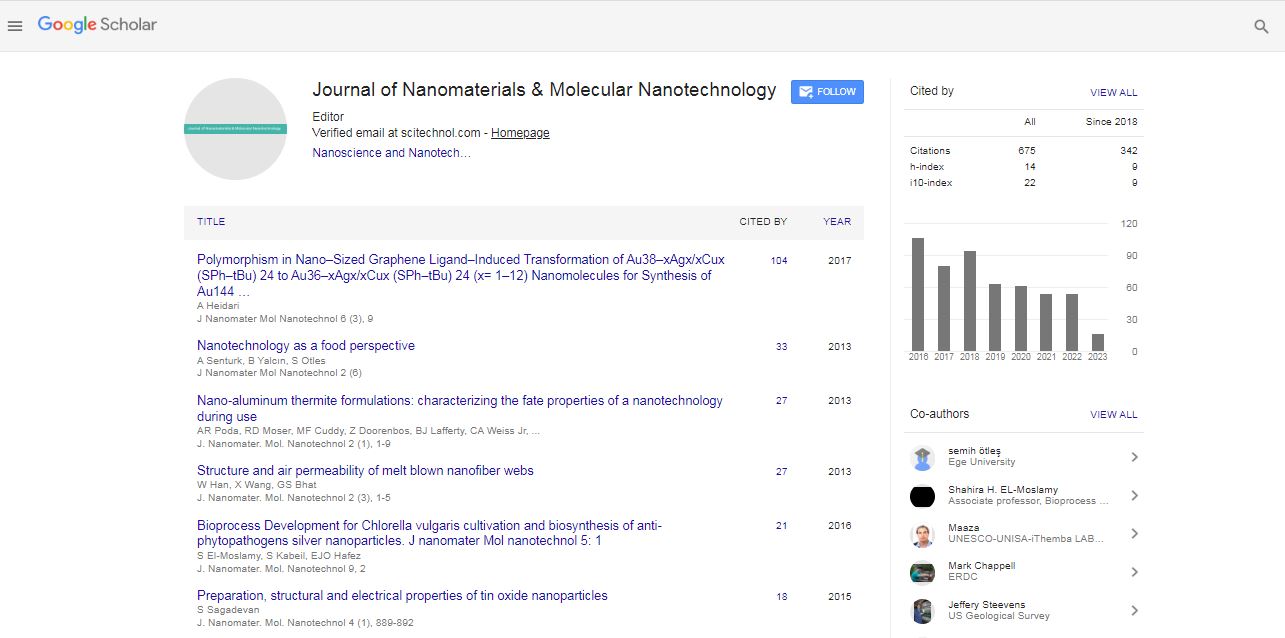Research Article, J Nanomater Mol Nanotechnol Vol: 1 Issue: 2
Graphene Oxides as Substrate for Enhanced Mammalian Cell Growth
| Baojiang Wang1,2, Pengju G. Luo1*, Kenneth N. Tackett II1, Oscar N. Ruiz3, Christopher E. Bunker3, Shuk Han Cheng2, Alexander Parenzan1, and Ya-Ping Sun1 | |
| 1Department of Chemistry and Laboratory for Emerging Materials and Technology, Clemson University, Clemson, South Carolina 29634, USA | |
| 2Department of Biology and Chemistry, City University of Hong Kong, Kowloon, Hong Kong SAR, China | |
| 3Fuels and Energy Branch, Propulsion Directorate, Air Force Research Laboratory, Wright-Patterson Air Force Base, Ohio 45433, USA | |
| Corresponding author : Pengju G. Luo, M.D., Ph.D Adjunct Assistant Professor, Department of Chemistry and Laboratory for Emerging Materials and Technology, Clemson University, Clemson, South Carolina 29634, USA Tel: +1-864-656-6701 E-mail: pluo@clemson.edu |
|
| Received: October 05, 2012 Accepted: December 11, 2012 Published: December 15, 2012 | |
| Citation: Wang B, Luo PG, Tackett KN II1, Ruiz ON, Bunker CE, et al. (2012) Graphene Oxides as Substrate for Enhanced Mammalian Cell Growth. J Nanomater Mol Nanotechnol 1:2. doi:10.4172/2324-8777.1000102 |
Abstract
Graphene Oxides as Substrate for Enhanced Mammalian Cell Growth
Graphene oxides (GOs), widely used as precursors in the reduction for single-layer graphene materials (rGOs), have found application potentials independent of those for graphene. In particular, the excellent aqueous compatibility of GOs has attracted growing interest in their biological applications. Studies on cellular interactions of GOs have been centered on the cytotoxicity evaluations. Beyond cytotoxicity, however, the cellular interactions of GOs apparently have other consequences. In this work, GOs as coating on solid-state substrate were found to be significantly enhancing mammalian cell growth, despite the fact that GOs in a more concentrated aqueous suspension were somewhat toxic to the same cell lines. Results for a comparison of cell growth on other surfaces based on carbon nanomaterials, including rGOs, carbon nanotubes, and composites of GOs with carbon nanotubes, are presented and discussed.




